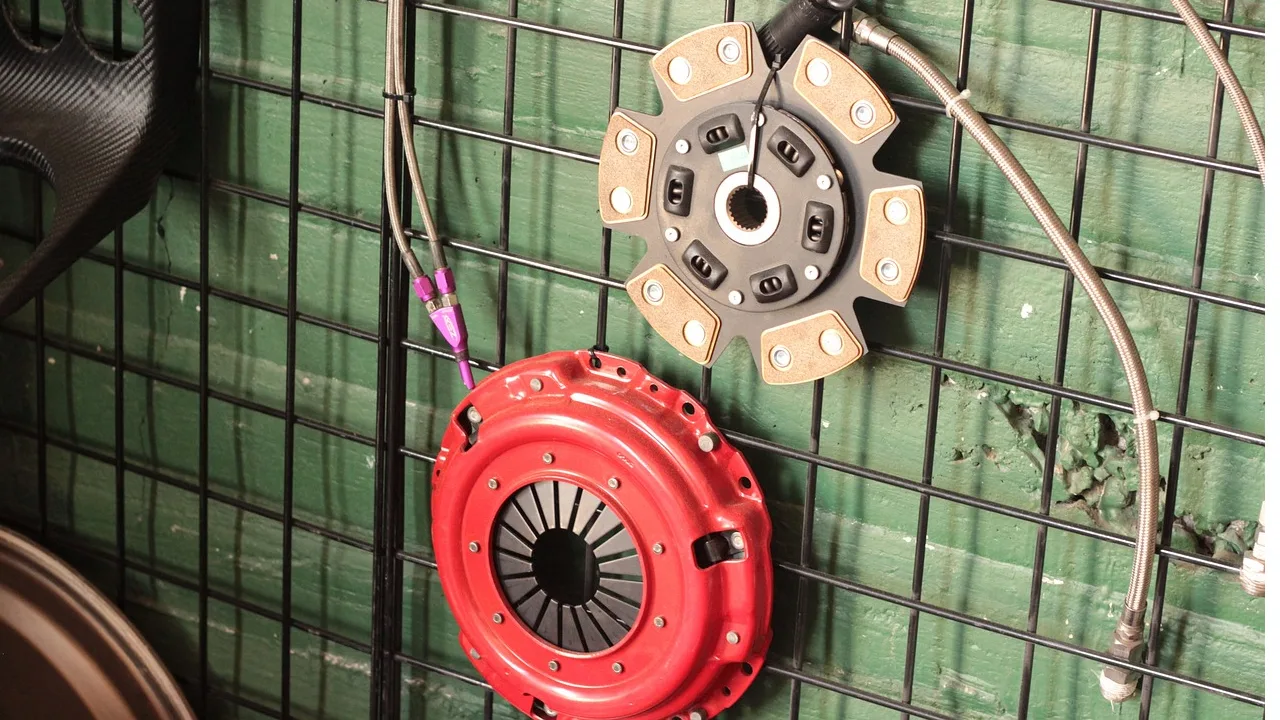Home »
The clutch system is a crucial component in both motorcycles and cars, serving the fundamental purpose of engaging and disengaging the engine from the transmission to control the power delivery to the wheels. While they share a function, motorcycle, and car clutch exhibit significant differences in design, operation, and application.
Motorcycle Clutch vs Car Clutch
Motorcycle Clutches:
Most motorcycles utilize a wet multi-plate clutch system. This design consists of multiple friction plates immersed in oil for cooling and lubrication. The clutch is typically operated by a hand lever discovered on the handlebars, offering direct control to the rider.
Car Clutches:
Cars typically employ a dry single-plate clutch system. This design features a single friction plate pressed against the flywheel using a diaphragm or coil spring. The clutch is operated by a pedal on the driver’s side footwell, providing control to the driver’s left foot.
Operation:
Engaging the clutch on a motorcycle involves squeezing the hand lever, which releases pressure on the clutch plates, allowing them to separate and disengage the engine from the transmission. Releasing the lever re-engages the clutch, transferring power from the engine to the transmission. The hand-operated lever offers precise modulation, enabling smooth acceleration, deceleration, and gear changes.
Engaging the clutch in a car requires depressing the clutch pedal, which disengages the clutch by releasing pressure on the friction plate, allowing it to disengage from the flywheel. Releasing the pedal engages the clutch, connecting the engine to the transmission. While slightly less precise than a hand-operated lever, drivers can still modulate the clutch engagement to achieve smooth driving and gear changes.
Control and Modulation:
Motorcycle clutches provide finer control and modulation due to the hand-operated lever. Riders can adjust the clutch engagement more precisely, facilitating smooth transitions between gears and optimal power delivery. This level of control is especially beneficial in dynamic riding conditions, such as navigating tight corners or varying road surfaces.
Car clutches are controlled by a foot pedal, offering adequate modulation for most driving scenarios. While not as precise as a hand lever, drivers can still adjust clutch engagement to suit driving conditions and ensure smooth operation. The pedal-operated clutch provides a familiar interface for drivers and is well-suited to the typical driving environment of cars.
Application and Performance:
Motorcycle clutches are to meet the specific demands of motorcycle riding, including frequent gear changes, high engine speeds, and variable road conditions. The wet multi-plate clutch system offers efficient power transfer and effective heat dissipation, ensuring reliability and longevity in diverse riding conditions. Motorcycle clutches succeed in providing responsive throttle control and precise gear changes, enhancing the overall riding experience for motorcyclists.
- Audi GT50 Concept: A Loud Reminder of Why Car Enthusiasts Fell in Love With Audi
- Nearly 30% of UK Drivers Believe Car Tax Should Be Based on Mileage — Survey
- Why Planes and Boats Escaped the Luxury Tax But Cars Didn’t
- Australia’s Headlight Confusion: Authorities Warn Drivers After Viral $250 Headlight Rule Goes Wild Online
- 2025 Hyundai Venue Facelift Launched in India – Full Details, Variants, and Price
Car clutches are the unique requirements of automotive applications. Which typically involve less frequent gear changes, lower engine speeds, and varying loads. The dry single-plate clutch system provides sufficient torque capacity and durability for everyday driving, offering smooth engagement and consistent performance. Car clutches are optimized for comfort and convenience, delivering reliable operation in an expensive range of driving scenarios, from city commuting to highway cruising.
Size and Weight:
Motorcycle clutches are generally smaller and lighter compared to car clutches. The compact design of motorcycle clutches contributes to the agility and maneuverability of motorcycles, allowing for nimble handling and responsive performance.
Car clutches are larger and heavier to accommodate higher torque and power output of engines. The robust construction of car clutches ensures durability and reliability under varying driving conditions, providing consistent performance over extended periods of use.
Conclusion:
In conclusion, while motorcycle and car clutches serve the same function of engaging and disengaging the engine from the transmission, they exhibit distinct differences in design, operation, and application. Motorcycle clutches offer precise control and modulation through hand-operated levers, making them well-suited to the dynamic demands of motorcycle riding. On the other hand, car clutches provide adequate modulation through pedal operation, delivering reliable performance in diverse driving scenarios. Understanding these differences is essential for optimizing the performance and efficiency of motorcycles and cars, enhancing the overall driving experience for enthusiasts and commuters alike.
